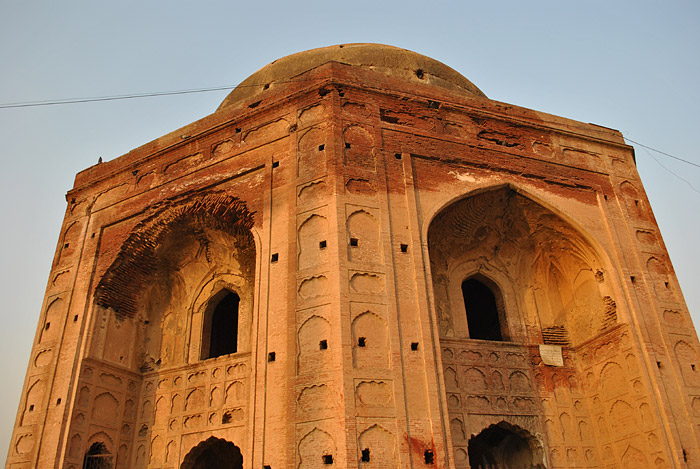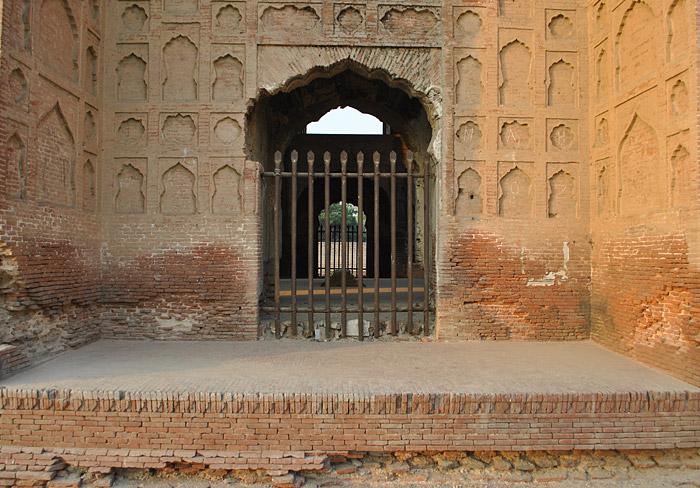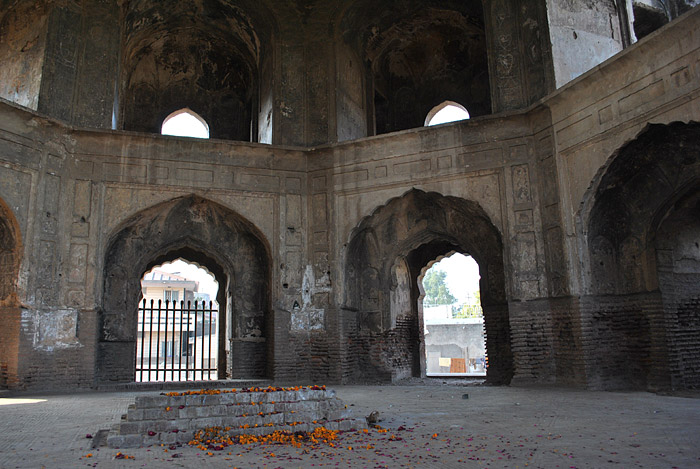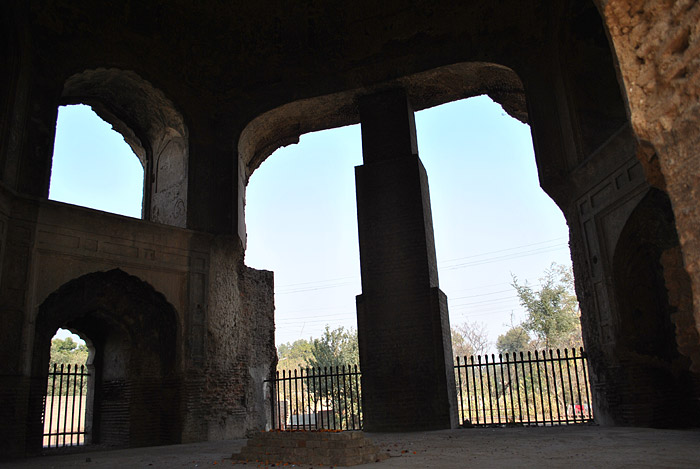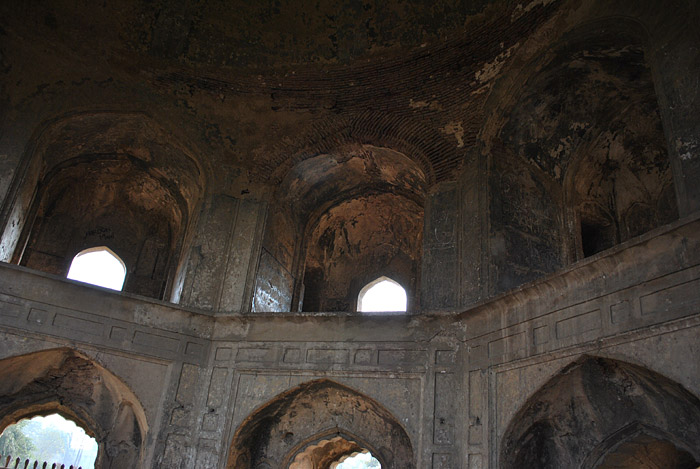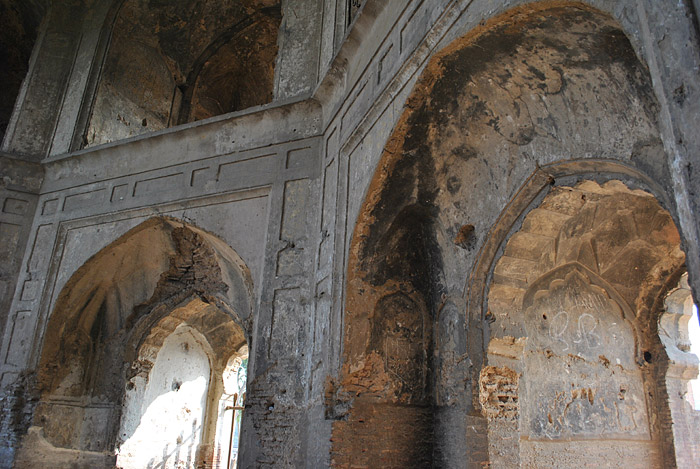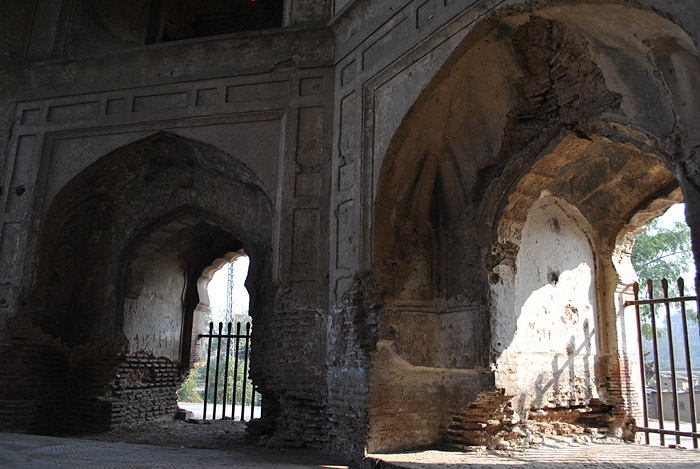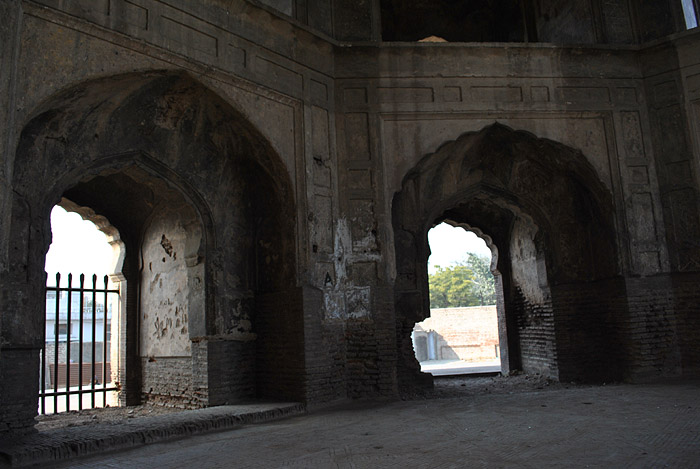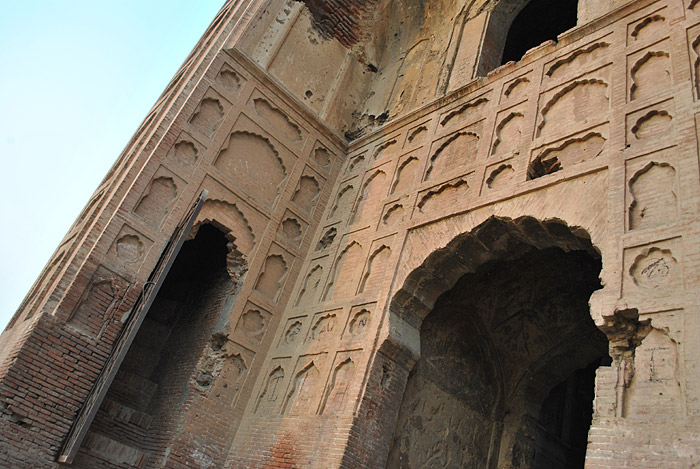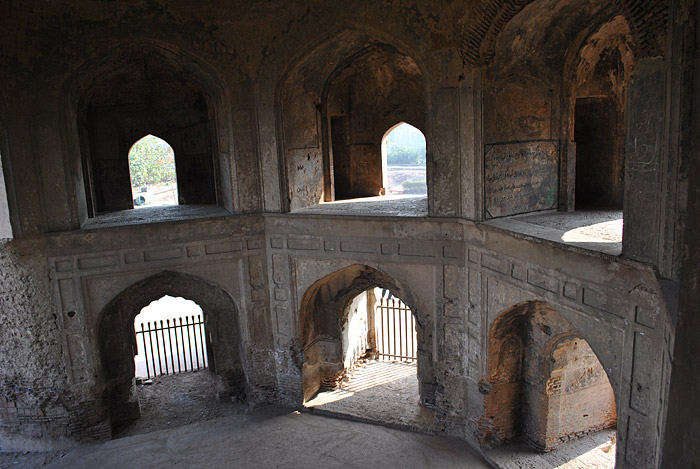Khan e Jahan Bahadur Kokaltash Tomb
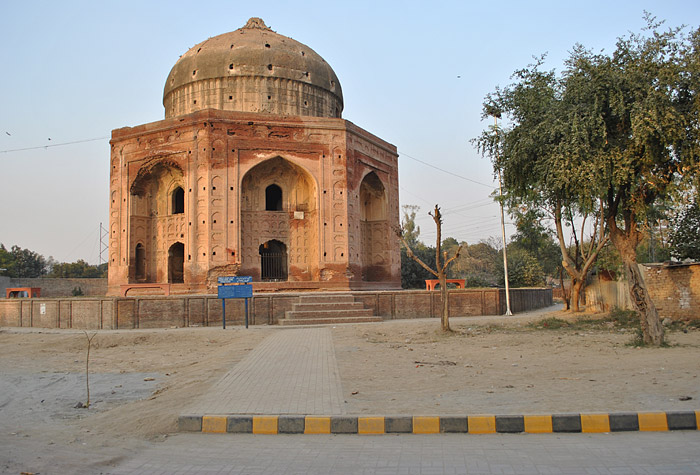
Khan-e-Jahan Bahadur Zafar Jhan Kokaltash fue un oficial de alto rango durante el reinado del emperador Aurangzeb Alamigir. Se desempeñó como subahdar (gobernador) del Panjab desde el 11 de abril de 1691, pero fue destituido de su cargo en 1693. Murió cuatro años después, el 23 de noviembre de 1697, y presumiblemente fue enterrado aquí poco después.
Su tumba octogonal está compuesta principalmente de ladrillos cortados sin ningún uso de arenisca roja, en contraste con muchos otros edificios de ese período. La apariencia actual de la tumba está muy despojada: los numerosos agujeros en la fachada y la cúpula atestiguan el trabajo de mármol que fue eliminado hasta el siglo XIX. A pesar de esto, los rastros de la elegancia original de la tumba todavía se evidencian en las muqarnas de estuco bellamente talladas (estalactitas squinches) que embellecen la parte superior de los nichos exteriores. El diseño en general es similar a la tumba de Ali Mardan Khan, que se encuentra a pocos kilómetros al norte.
En general, la tumba se encuentra en mal estado de conservación. En algún momento del pasado, la mayor parte de la fachada este se derrumbó. Afortunadamente, la cúpula se salvó, pero ahora está sostenida por un pilar de ladrillo de diseño moderno. Los muqarnas en la parte superior de los nichos están sustancialmente dañados, revelando el ladrillo subyacente. Se necesita urgentemente una restauración significativa para evitar un mayor deterioro.
Khan-e-Jahan Bahadur Zafar Jhan Kokaltash was a high-ranking officer during the reign of Emperor Aurangzeb Alamigir. He served as subahdar (governor) of the Panjab from April 11th, 1691, but was dismissed from office in 1693. He died four years later on November 23, 1697, and was presumably interred here shortly thereafter.
His octagonal tomb is composed primarily of cut brick work without any use of red sandstone, in contrast to many other buildings of that period. The current appearance of the tomb is much denuded: the numerous holes in the facade and dome attest to marblework that was stripped away as late as the 19th century. Despite this, traces of the tomb's original elegance are still evidenced in the beautifully carved stucco muqarnas (stalactite squinches) that embellish the tops of the outer alcoves. The design overall is similar to Ali Mardan Khan's tomb, which is located just a few kilometers to the north.
Overall, the tomb is in a poor state of preservation. At some point in the past, most of the east facade collapsed. Fortunately, the dome was spared, but it is now supported by a brick pillar of modern design. The muqarnas at the tops of the alcoves are substantially damaged, revealing the underlying brickwork. Significant restoration is urgently needed to avoid further dilapidation.
